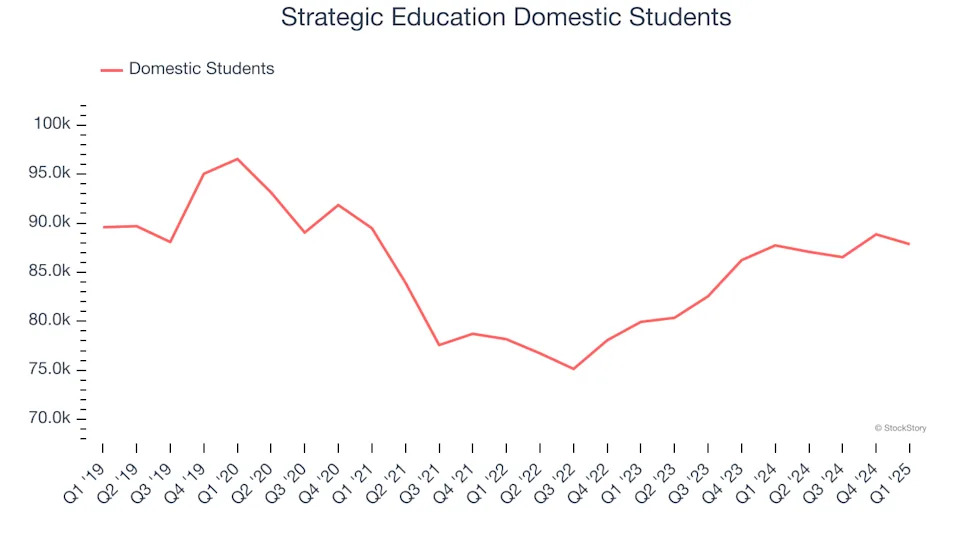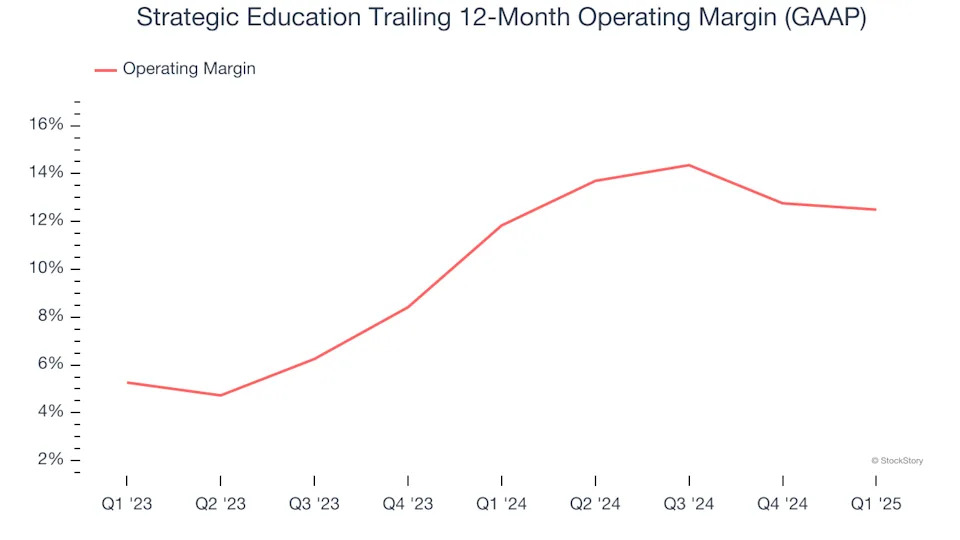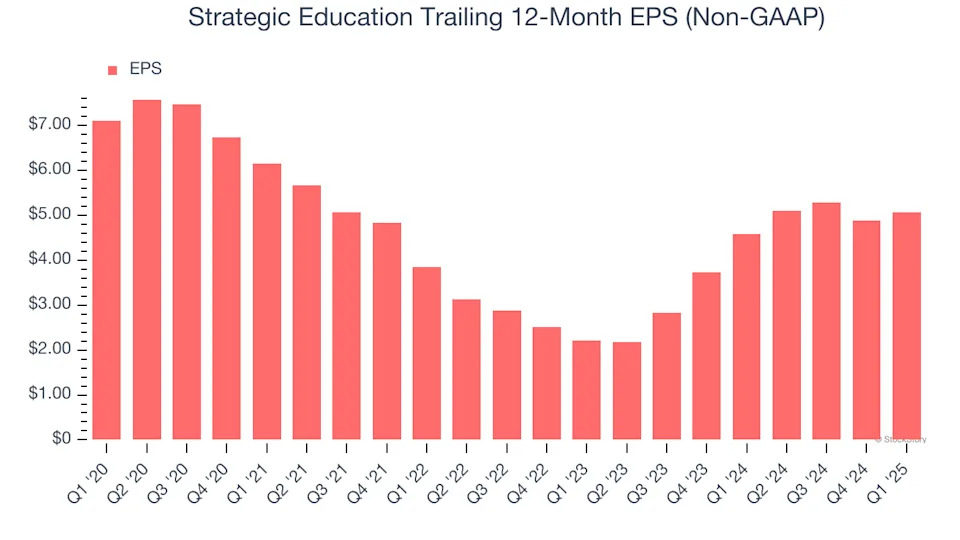Higher education company Strategic Education (NASDAQ:STRA) reported Q1 CY2025 results beating Wall Street’s revenue expectations , with sales up 4.6% year on year to $303.6 million. Its non-GAAP profit of $1.30 per share was 34.9% above analysts’ consensus estimates.
Is now the time to buy Strategic Education? Find out in our full research report .
Strategic Education (STRA) Q1 CY2025 Highlights:
“We are pleased with our first quarter results driven by continued strength across the Education Technology Services segment and ongoing focus on growth through employer partnerships,” said Karl McDonnell, Chief Executive Officer of Strategic Education.
Company Overview
Formed through the merger of Strayer Education and Capella Education in 2018, Strategic Education (NASDAQ:STRA) is a career-focused higher education provider.
Education Services
A whole industry has emerged to address the problem of rising education costs, offering consumers alternatives to traditional education paths such as four-year colleges. These alternative paths, which may include online courses or flexible schedules, make education more accessible to those with work or child-rearing obligations. However, some have run into issues around the value of the degrees and certifications they provide and whether customers are getting a good deal. Those who don’t prove their value could struggle to retain students, or even worse, invite the heavy hand of regulation.
Sales Growth
Reviewing a company’s long-term sales performance reveals insights into its quality. Any business can have short-term success, but a top-tier one grows for years. Over the last five years, Strategic Education grew its sales at a sluggish 4% compounded annual growth rate. This was below our standard for the consumer discretionary sector and is a poor baseline for our analysis.

We at StockStory place the most emphasis on long-term growth, but within consumer discretionary, a stretched historical view may miss a company riding a successful new product or trend. Strategic Education’s annualized revenue growth of 7.7% over the last two years is above its five-year trend, but we were still disappointed by the results.

We can dig further into the company’s revenue dynamics by analyzing its number of domestic students and international students, which clocked in at 87,854 and 20,082 in the latest quarter. Over the last two years, Strategic Education’s domestic students averaged 6.4% year-on-year growth while its international students averaged 1.4% year-on-year growth.

This quarter, Strategic Education reported modest year-on-year revenue growth of 4.6% but beat Wall Street’s estimates by 1%.
Looking ahead, sell-side analysts expect revenue to grow 4.8% over the next 12 months, a slight deceleration versus the last two years. This projection is underwhelming and suggests its products and services will see some demand headwinds.
Here at StockStory, we certainly understand the potential of thematic investing. Diverse winners from Microsoft (MSFT) to Alphabet (GOOG), Coca-Cola (KO) to Monster Beverage (MNST) could all have been identified as promising growth stories with a megatrend driving the growth. So, in that spirit, we’ve identified a relatively under-the-radar profitable growth stock benefiting from the rise of AI, available to you FREE via this link .
Operating Margin
Operating margin is an important measure of profitability as it shows the portion of revenue left after accounting for all core expenses – everything from the cost of goods sold to advertising and wages. It’s also useful for comparing profitability across companies with different levels of debt and tax rates because it excludes interest and taxes.
Strategic Education’s operating margin might fluctuated slightly over the last 12 months but has generally stayed the same, averaging 12.2% over the last two years. This profitability was higher than the broader consumer discretionary sector, showing it did a decent job managing its expenses.

This quarter, Strategic Education generated an operating profit margin of 13.1%, down 1.1 percentage points year on year. This reduction is quite minuscule and indicates the company’s overall cost structure has been relatively stable.
Earnings Per Share
Revenue trends explain a company’s historical growth, but the long-term change in earnings per share (EPS) points to the profitability of that growth – for example, a company could inflate its sales through excessive spending on advertising and promotions.
Sadly for Strategic Education, its EPS declined by 6.6% annually over the last five years while its revenue grew by 4%. This tells us the company became less profitable on a per-share basis as it expanded.

In Q1, Strategic Education reported EPS at $1.30, up from $1.11 in the same quarter last year. This print easily cleared analysts’ estimates, and shareholders should be content with the results. Over the next 12 months, Wall Street expects Strategic Education’s full-year EPS of $5.07 to grow 12.6%.
Key Takeaways from Strategic Education’s Q1 Results
We were impressed by how significantly Strategic Education blew past analysts’ EPS expectations this quarter. We were also glad its EBITDA outperformed Wall Street’s estimates. On the other hand, its number of domestic students missed. Zooming out, we think this was a decent quarter with some key areas of upside. The stock traded up 2.9% to $82.59 immediately after reporting.
Strategic Education may have had a good quarter, but does that mean you should invest right now? If you’re making that decision, you should consider the bigger picture of valuation, business qualities, as well as the latest earnings. We cover that in our actionable full research report which you can read here, it’s free .

